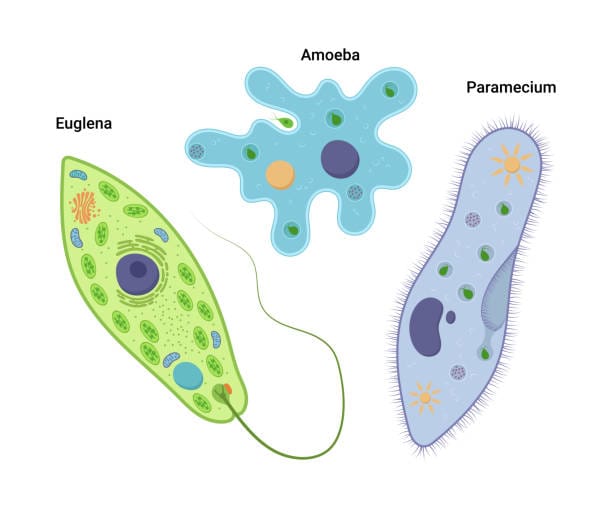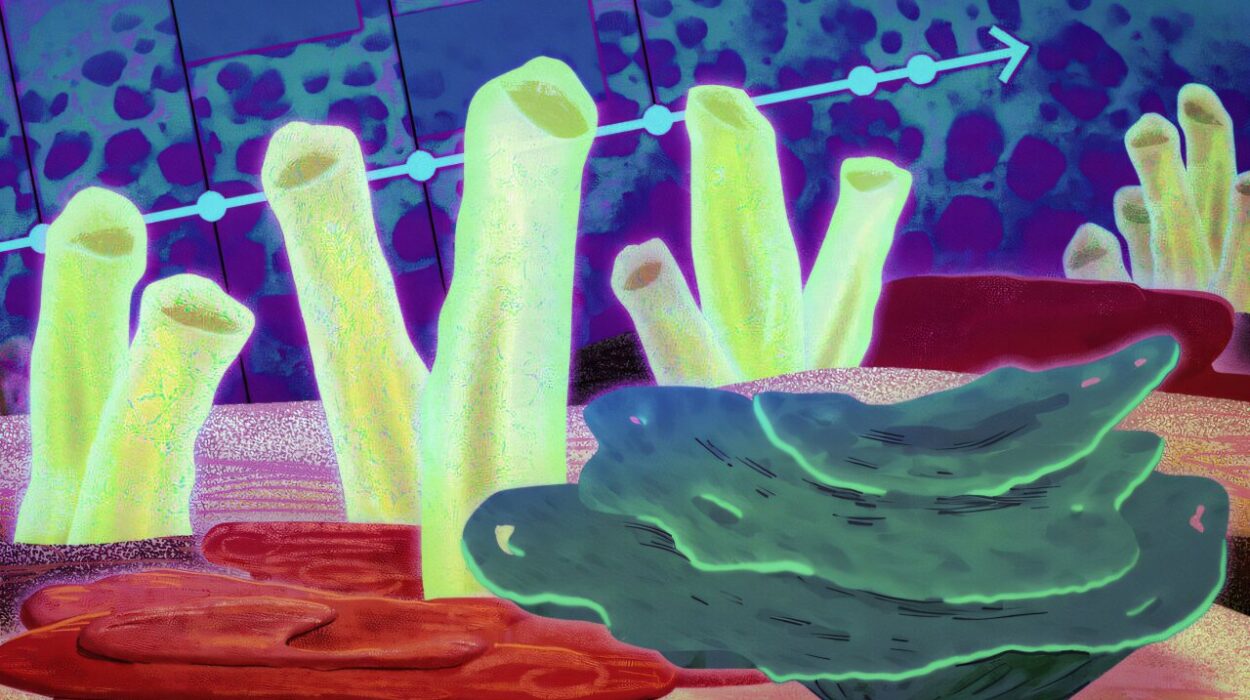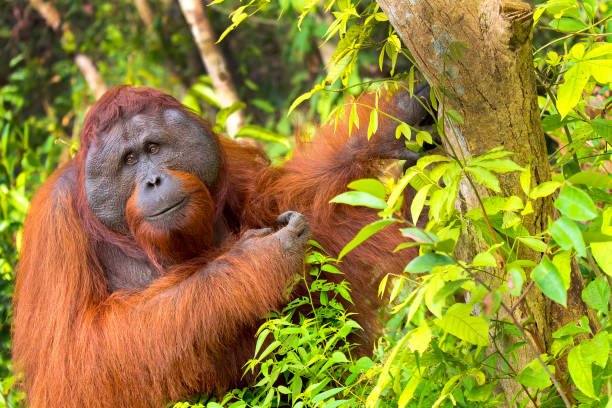Beneath the surface of every pond, inside droplets of water, and drifting invisibly through moist soil and leaves, there exists a world so small that it escapes the eye but pulses with life, complexity, and beauty. This hidden universe is home to creatures that defy conventional definitions of life—organisms that are neither plant, animal, nor fungus, but something older, simpler, and in many ways more mysterious. Among these tiny titans are the amoeba, the paramecium, and the euglena—microscopic marvels whose lives echo the great evolutionary themes of motion, adaptation, survival, and transformation.
These single-celled organisms, long considered mere curiosities by early naturalists peering through crude microscopes, have since emerged as key figures in our understanding of biology, evolution, and the very nature of life itself. Their miniature worlds, powered by flagella, cilia, and shapeshifting membranes, reflect the ingenuity of nature’s oldest engineers. This article takes a deep dive into their biology, behavior, and profound scientific significance—drawing readers into the strange, alien, yet oddly familiar world of protists.
The Realm of the Protists
Amoebas, paramecia, and euglena belong to a diverse and ancient group known as protists. Protists are not a taxonomic kingdom in the traditional sense, but rather a catch-all category for eukaryotic organisms that don’t quite fit elsewhere. They are defined less by what they are than by what they are not: they are not animals, plants, or fungi, though they may share characteristics with each. The unifying trait among protists is their cellular simplicity. Most are unicellular, possessing a complex internal structure but lacking the organized tissues found in multicellular life.
Their diversity is staggering. Some are photosynthetic like plants, others ingest food like animals, and many switch between the two strategies depending on environmental conditions. They can live freely in water, parasitize hosts, or form symbiotic relationships. Some, like planktonic euglenoids, help sustain aquatic ecosystems; others, like amoebic pathogens, can cause devastating diseases.
Despite their humble size, these single-celled organisms represent some of the most adaptable and evolutionarily innovative lifeforms ever to exist. Their success lies in their ability to change, to move, to engulf, to evolve, and most of all, to endure.
The Shapeshifting Amoeba: Chaos in Motion
The word “amoeba” comes from the Greek “amoibē,” meaning change. Few names could be more fitting. The amoeba is not bound by any fixed shape. It oozes across surfaces, flows around obstacles, and stretches itself into finger-like projections called pseudopodia—“false feet”—to explore its environment.
Amoebas belong to the phylum Amoebozoa, though the term is often used loosely to describe many similar organisms with flowing, amorphous movements. Their method of locomotion—known as cytoplasmic streaming—is driven by the shifting of gel-like cytoplasm inside the cell. As they move, they surround food particles such as bacteria or small protists, engulfing them in a process called phagocytosis.
Inside their soft bodies, digestion takes place within food vacuoles, and waste products are expelled as the cell continually reshapes itself. There is no brain, no nervous system, no organs—just a flexible cell membrane, cytoplasm, and a nucleus orchestrating the essential functions of life. Yet amoebas display remarkable behaviors: they respond to stimuli, avoid danger, and can even learn rudimentary patterns, as some studies suggest.
Amoebas are found in nearly every moist habitat on Earth—from the bottoms of lakes to the slime on tree bark. Some are harmless; others, like Entamoeba histolytica, cause amoebic dysentery, a severe and sometimes fatal intestinal disease. Others live quietly in our bodies or environments, their presence unnoticed yet ecologically essential.
Despite their simplicity, amoebas challenge our understanding of intelligence and consciousness. What drives their movement? What defines their awareness? These questions hint at the philosophical implications hidden in their squishy forms.
Paramecia: The Elegant Swimmers
Where amoebas are formless wanderers, paramecia are efficient swimmers. Their bodies are shaped like slippers, streamlined and covered in tiny hair-like structures called cilia. These cilia beat rhythmically, allowing the organism to glide, spin, and steer through the water with surprising grace and speed.
Paramecia belong to the phylum Ciliophora, a group of ciliated protists that include some of the most complex single-celled organisms ever studied. Their cellular anatomy is astonishingly intricate. Inside a paramecium, one finds not only a macronucleus for daily metabolic activity but also a micronucleus for reproductive functions. These two nuclei coexist, each playing a role in the organism’s survival and continuity.
The feeding mechanism of a paramecium is similarly advanced. Cilia sweep food particles into an oral groove, where they are funneled into food vacuoles. Digestion occurs in these vacuoles as they circulate within the cell, and undigested material is expelled through an anal pore. This internal system mimics, on a microscopic scale, the complexity of animal digestion.
Perhaps most fascinating is the way paramecia reproduce. They can undergo binary fission—a form of asexual reproduction—but also engage in a process called conjugation. During conjugation, two paramecia align side by side and exchange genetic material through a cytoplasmic bridge. This recombination promotes genetic diversity and evolutionary adaptability, blurring the lines between simple and complex life.
Paramecia are also remarkably aware of their surroundings. They respond to chemical gradients, light, and even mechanical stimulation. They can reverse their swimming direction in milliseconds when they bump into obstacles, a behavior governed by membrane potential changes akin to nerve impulses in higher animals.
These protozoan swimmers, often observed by schoolchildren under microscopes, are not only educational tools but reminders of how complexity can arise even within the confines of a single cell.
Euglena: The Solar-Powered Transformers
Euglena is perhaps the most enigmatic of the three. Belonging to the phylum Euglenozoa, this organism blurs the boundaries between animal and plant. Euglena swims like an animal, using a whip-like flagellum to propel itself forward. But it also performs photosynthesis like a plant, harvesting sunlight using chloroplasts embedded in its cytoplasm.
This duality is more than a curiosity; it’s a powerful evolutionary strategy. When light is abundant, euglena produces its own food through photosynthesis. In darkness or when nutrients are scarce, it switches to heterotrophy, absorbing organic material from its surroundings. This flexibility—called mixotrophy—makes euglena highly adaptable to changing environments.
The green coloration of euglena comes from chlorophyll, but its photosynthetic pigments and cellular structures are distinct from those in plants. This suggests that its chloroplasts may have evolved through secondary endosymbiosis—a process in which one eukaryote engulfed another that already had chloroplasts. Euglena, in other words, is a product of life absorbing life.
Euglena’s ability to sense and respond to light is another marvel. It possesses a red eyespot—a pigmented photoreceptive organelle that helps it detect light direction and intensity. This enables phototaxis, a movement toward or away from light sources, allowing euglena to maximize photosynthesis.
Its adaptability extends to locomotion. While primarily using its flagellum, euglena can also move through a unique form of motion known as euglenoid movement, where the body contracts and expands in waves. This allows it to navigate through thick, viscous environments where swimming alone would be ineffective.
Euglena occupies a peculiar niche in the tree of life, embodying the fluidity of evolutionary boundaries. It serves as a living testament to the idea that life is not defined by categories, but by the capacity to change, survive, and thrive.
Microscopic Worlds With Macroscopic Implications
Studying amoebas, paramecia, and euglena is more than an exercise in curiosity—it is a journey into the fundamental processes that underpin all life. These organisms reveal how life can be built from a single cell yet still display behaviors we associate with animals—movement, feeding, reproduction, even decision-making.
In ecology, protists play critical roles. They are primary producers, decomposers, and prey for larger organisms. In aquatic ecosystems, they contribute to oxygen production and nutrient cycling. Their presence—or absence—can signal environmental health or degradation.
In medicine, they have dual reputations. While some are harmless or even beneficial, others are deadly. Pathogenic amoebas can destroy human tissues. Some ciliates harbor symbiotic bacteria that cause disease. Even euglena, usually benign, can bloom uncontrollably under certain conditions, disrupting water systems.
In biotechnology, protists offer exciting potential. Euglena’s photosynthetic abilities make it a candidate for sustainable biofuel production. Its high protein content and vitamin-rich composition also make it a promising food supplement. Paramecia are used in toxicology testing, and amoebas help researchers study cell motility, phagocytosis, and neurological diseases.
And in astrobiology, these organisms offer clues to how life might look on other worlds. Their resilience to extreme conditions, metabolic flexibility, and simplicity make them models for the kind of life that might thrive beyond Earth.
The Philosophical Power of the Invisible
Beyond their biological significance, amoebas, paramecia, and euglena carry profound philosophical weight. They challenge our assumptions about what it means to be alive, conscious, or intelligent. They show us that complexity does not require size, and that intelligence can exist without neurons. They are reminders that even in the tiniest of life forms, the universe has woven intricate patterns of structure, function, and adaptation.
To watch an amoeba extend its pseudopodia is to witness the very origin of motion. To see a paramecium feed and divide is to behold the earliest echoes of animal behavior. To follow a euglena chasing sunlight is to glimpse the tension between plant and animal, between light and darkness, that has shaped life for billions of years.
Microscopy reveals not only organisms but ideas—concepts about evolution, survival, and transformation. In studying these microscopic marvels, we are not merely cataloging the diversity of life. We are discovering what it means to be alive in a universe that, from its smallest atom to its largest galaxy, is alive with movement, change, and wonder.
Conclusion: The Hidden Masters of Adaptation
Amoebas, paramecia, and euglena are more than the stars of high school biology classes or fleeting blips on microscope slides. They are the quiet titans of Earth’s history, evolutionary pioneers that have shaped—and continue to shape—the biosphere. Their ability to survive, transform, and endure reflects life’s core essence: resilience.
In a world facing ecological instability, climate change, and biodiversity loss, these protists offer a powerful lesson. They have weathered mass extinctions, ice ages, asteroid impacts, and more, not through force, but through adaptability. They don’t resist change—they become it.
When we look at them closely, with the wonder of a child or the precision of a scientist, we see not just cells, but stories. We see the first steps of locomotion, the first meals, the first unions of DNA. We see the threads of history woven into membrane and cytoplasm. We see ourselves.
And perhaps, by studying the invisible world beneath our feet, we will learn how to better navigate the visible one above it.






